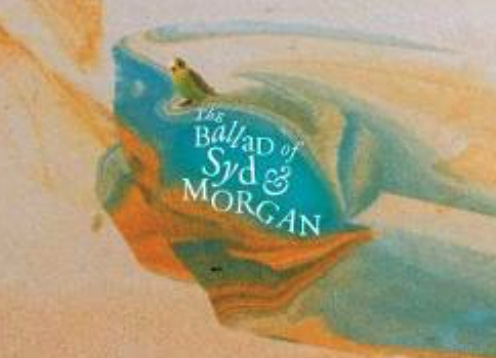Ruthie Collins gives you the lowdown on arty happenings around Cambridge in January
The tree rustled. It had made music before they were born and would continue after their deaths, but its song was of the moment.” This beautiful line is quoted at the start of The Ballad of Syd and Morgan, a new Cambridge-set novel by Haydn Middleton, published by Propolis Books. Starring two bohemian English legends, Syd Barrett and EM Forster, the line is by Forster himself (Morgan). But did the two ever really meet in Cambridge? “I’ve been a huge Barrett and Forster fan since my mid-teens,” says Middleton. “But no, I’m afraid they never did actually meet, as far as we know!”
Most imagine Syd Barrett as that forever-young legendary artist whose genius helped launch Pink Floyd to stardom. Middleton captures Syd’s foppish, Byronic charisma, in his native Cambridge, where he was happiest. A mishmash of psychedelic, Peter Pan sparkle and dandy charm throughout, it’s a portrait with real craft that instantly evokes why Syd attracted fans across the world – an almost acolyte-like following – who still adore him today.
Conjuring Cambridge’s own bohemian heart, The Ballad of Syd and Morgan is full of crisp prose that’s both light-fantastic in effect, but rich in references. King’s Chapel becomes ‘a meringue’, King’s College ‘a great raffish ice cream’, Middleton’s artistry reflecting Syd’s own whimsical world, a world full of childlike, Arcadian wonder. “Uncannily, the book is a very, very good representation of Syd… I couldn’t believe Haydn hadn’t actually met him,” Rosemary, Syd’s sister says.
The novel is set in the England of 1968, ‘uneasy with itself’, backdrop to an imagined – or perhaps real, who knows? – conversation between Syd and EM Forster on the complexities on being an artist. Syd was an artist first and foremost, and studied at Cambridge School of Art (now Anglia Ruskin). His glittering foray into pop, and subsequent departure, is narrated here – the rambling, sometimes poignant brightness of a ‘child far from home’. Check out Propolis Books for more info.
It’s easy to doubt the brightness that art can inspire as 2019 looms, for many, in the shadow of heavier issues. Yet if any action is to be taken on these issues at all, this sense of the positive is essential. I’ve been taking gutsy inspiration from CK Williams, the late Pulitzer prize-winning poet, whose thoughts on the artist’s ability to see and share beauty in nature, even in the midst of panic around climate breakdown, are a real remedy for our times. If you’re ever in need of an intellectual reminder of why making art and seeing beauty continues to be important, have a read of his essay Nature and Panic.
“Syd’s own whimsical world, a world full of wonder“
Cambridge continues to be a vital launchpad for both art and humanitarian activism, with artist Elizabeth Eade, who took her BA in Fine Art at Cambridge School of Art in 2012, one to watch this year. Her work Die Liste, which explores the human cost of the refugee crisis, won the HIX Award last year – a £10,000 art prize. Die Liste is a handwritten note detailing the names of 33,305 people who died trying to access Europe as refugees. Work like this shows that you can make a difference. You can speak out on issues important to you. Art continues to be an essential vehicle to make that happen.
One of the first young artists to work in the pop-up studios on Newmarket Road that went on to become Cambridge Art Salon was Charlie Chappers, who now runs Mobile Refugee Support doing incredible work, sustaining the lives of displaced refugees in France. You can follow and support their work by searching Mobile Refugee Support on Facebook.
Girl Talk is an exhibition coming to Murray Edwards College this month, loosely themed around women ‘taking back the narrative’: placing the work of female artists at the University of Cambridge alongside the New Hall art collection – which holds the biggest collection of women’s art in Europe. Gems in the collection include works by Tracey Emin, Bridget Riley, Leonora Carrington and the Guerilla Girls – and there’s an impressive range of talks on offer at the college, too. The exhibition itself takes place at the Murray Edwards bar, curated by Alina Khakoo and Kitty Grady, who are behind Cambridge Girl Talk itself, a multimedia space for women to share stories and spark change.
So in 2019, let’s not forget what Noam Chomsky describes as the ‘benign’ side of humanity. Asked if he was optimistic on the future of humanity in his book, Optimism Over Despair, he replies, “We have two choices. We can be pessimistic, give up and help ensure that the worst will happen. Or we can grasp the opportunities that surely exist, and maybe help make the world a better place. Not much of a choice.” Wise words indeed – I know which choice I’m making. Happy 2019, all!

